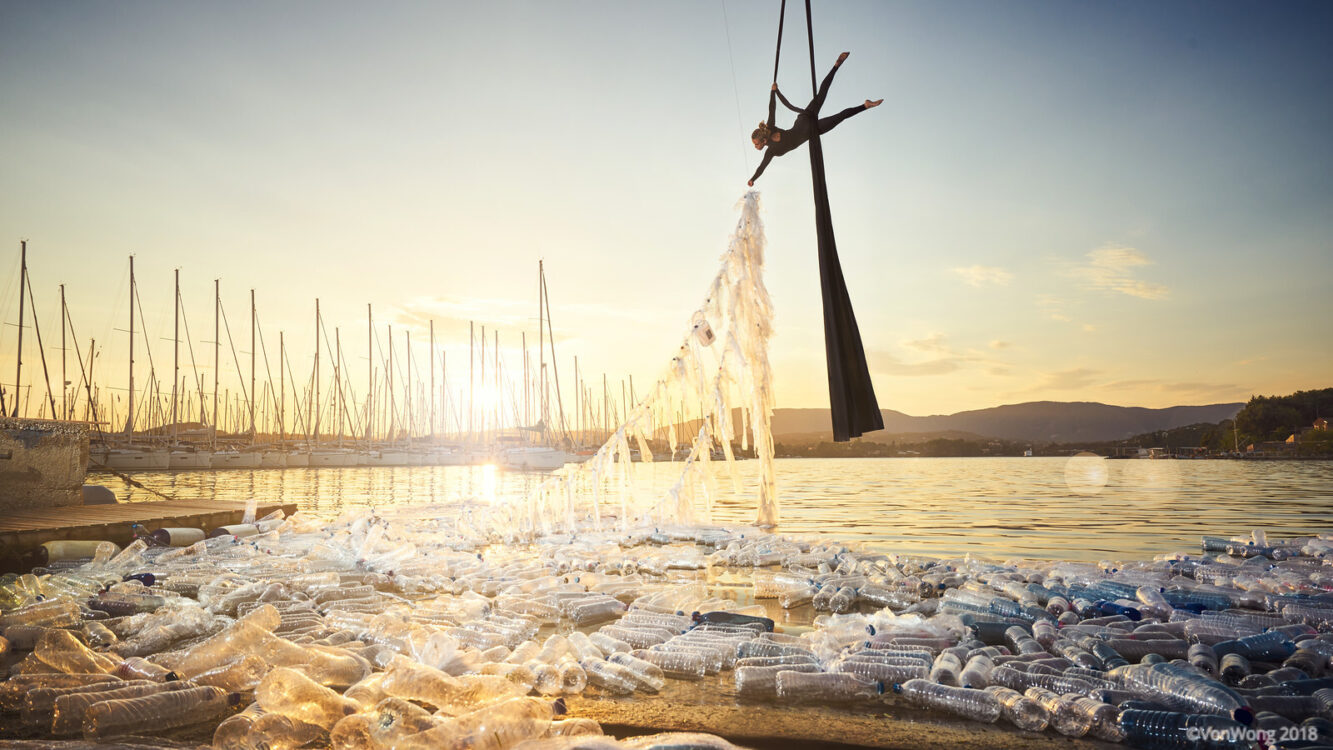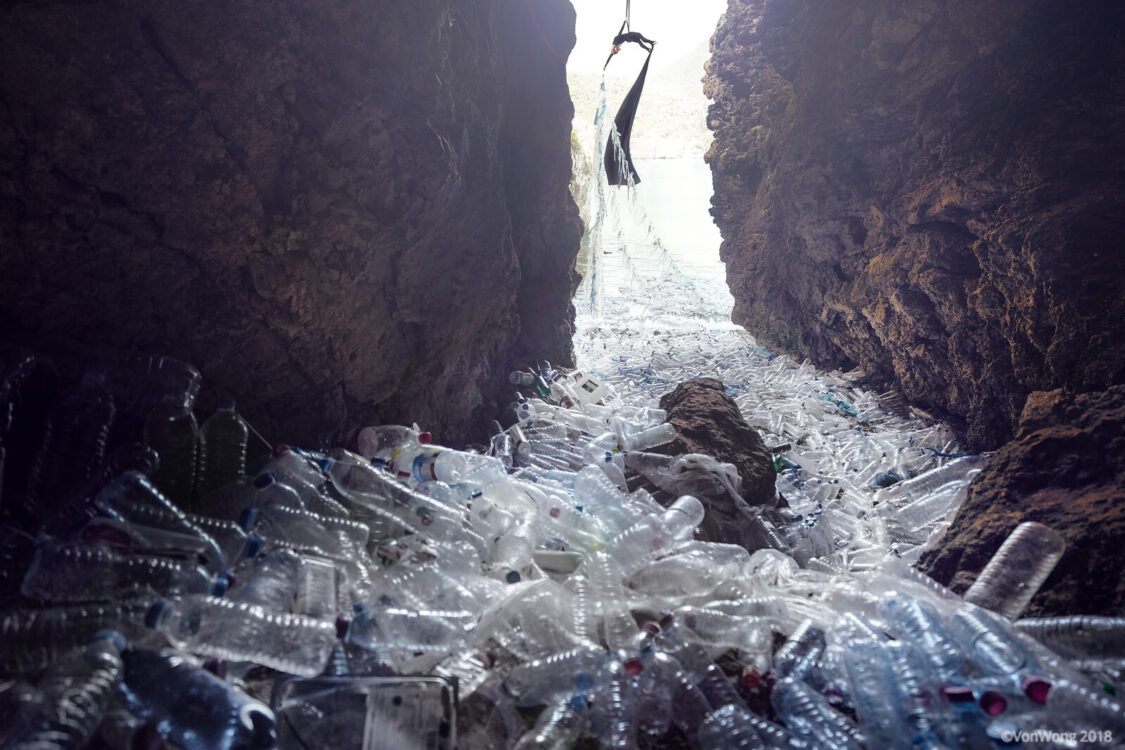Why throw plastics into the ocean? I can’t speak for others but in our case, we decided to throw an entire truckload of plastic into the ocean after we learned about this shocking statistic:
Every 60 seconds, the equivalent of a truckload of plastic enters the ocean.
Although we were able to remove the plastics that we put in, the same can’t be said for what is currently happening every second, of every day, for the rest of our lives, and those of our children. Our hope with this project was to highlight the real problem: That unless we stopped plastic at the source, cleanups and recycling alone would never be enough.

Our battle plan was pretty straightforward:
- Connect with a large organization like Greenpeace that had the clout to fight big corporations
- Do something slightly insane that could stand out from all the noise on social media
- Rally complete strangers online using extravagant art and rapid storytelling
- Ask for one minute of their time to make change happen
The next step – was to collect as much plastic as possible. Greenpeace Greece and local grass-root organizations like Garbage Art Corfu helped us transform our concept from idea to reality by connecting our mission to local schools and individuals. Ultimately we collected over ten thousand pieces of plastic!

We spent the next few days tying the plastics together with old fishing line that was scavenged from the dumps of the Gouvia Marina. Marjan, a local sailor, introduced us to the owner of the Marina when she heard our call for help. They graciously offered us space, shade, and food while we worked to meticulously tie the individual pieces of plastic together so that they wouldn’t escape.
We tested our setup at the Marina, where Katerina and her rigger Spiros Badios hung off a massive boat crane. The dock at the Marina was our playground and Dimitri, the manager of the Marina, graciously offered us access to their boat crane. With their help, we were able to float the plastics around to see how they would behave in the water, without too much fear of them escaping.
There, we discovered first hand how hard it was to keep the plastics from floating all over the place. Even within the sheltered confines of the Marina, the plastics would constantly try their best to float away. It was a constant struggle to move them in and out of position and a preview of how tough it would be for us to replicate this project in nature.
We had to find a way to transport the plastics across the island without getting them tangled. One of the biggest concerns we had was figuring out how to transport the plastics to the most remote pristine locations on the island. Thankfully, volunteers like Stamatis Chalkias, Theodore Bourkas, Marjan Hoogendoorn and Peter Kraan graciously offered their trucks and boats to us to be loaded up with plastics!

And carefully place them around the most dramatic caves we could find for Katerina to hang fromFor this shot, we had to carefully carry thousands of bottles down a steep pathway before un-tangling them and laying them out to illustrate plastics flowing from land into sea.
To illustrate how plastics inevitably flow from land into the sea, despite our best efforts to stop them.Currently, up to 12 Million metric tons of plastic flow into the oceans every year, and that number is set to increase.
To keep the plastics from escaping, we had to tie them down to larger bottles that we filled with rocks that acted as anchors.Despite the weights, every time a large ship would pass by, our entire landscape would change. Volunteers with sticks had to be placed strategically to act as human anchors to keep everything from flowing away.
For this project, we were able to retrieve all the plastics we tossed out… Although these images look beautiful and peaceful, the reality was that every step of the process was a battle to control the plastics from escaping.
But in the real world, it’s becoming impossible to keep up with. Very few corporations have decided to tackle the problem head-on, and while grassroots efforts are making a difference – it still isn’t enough.



Credits
Creative Direction: Von Wong & Katerina Soldatou
Produced in collaboration with Greenpeace
Cinematography: Valentina Vee
Rigging: Spiros Badios
Additional Footage: Christophe Anagnostopoulous, Aleksandar Arbajter, John Dela Torre, Happy Clickzz , Max Mwy, 溫子揚
BTS Photos: Anna Tenne, Spiro Korifo Sueref
Sound Engineer: Andrew Kesler
Color Grading: Adam Frimer
